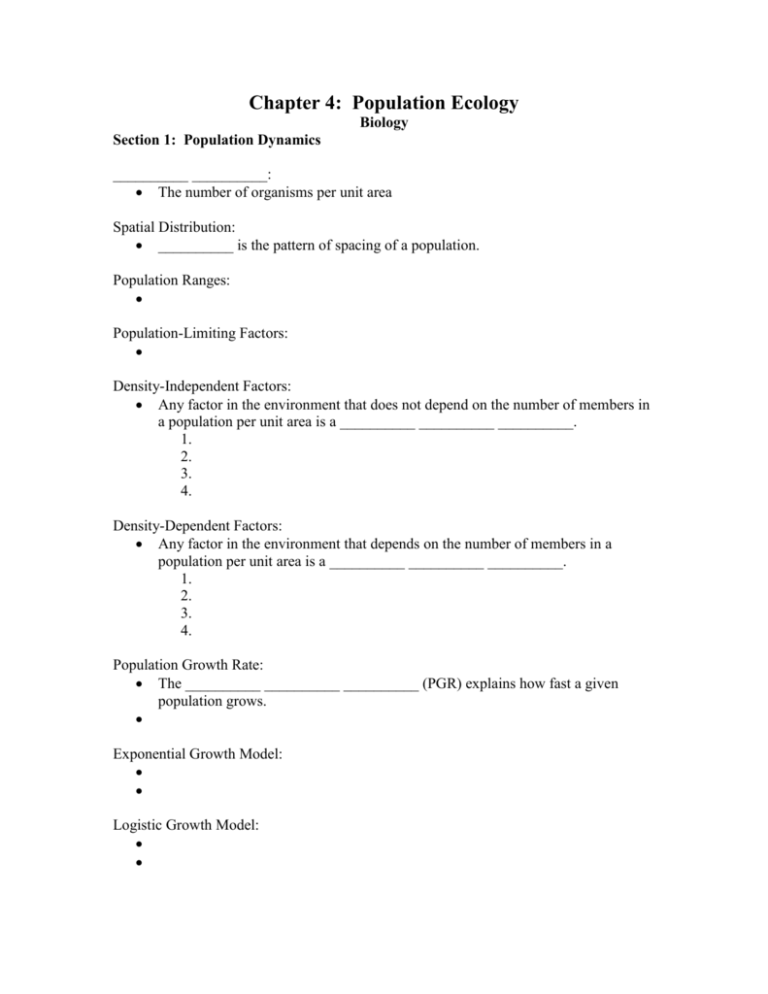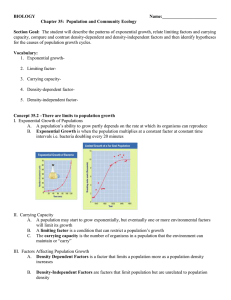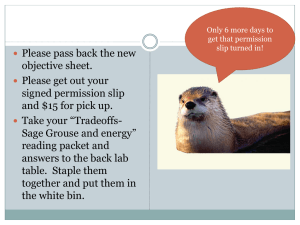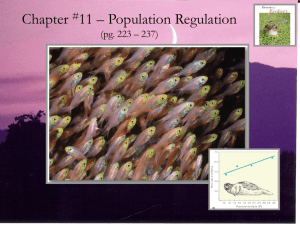Chapter 4: Population Ecology
advertisement

Chapter 4: Population Ecology Biology Section 1: Population Dynamics __________ __________: The number of organisms per unit area Spatial Distribution: __________ is the pattern of spacing of a population. Population Ranges: Population-Limiting Factors: Density-Independent Factors: Any factor in the environment that does not depend on the number of members in a population per unit area is a __________ __________ __________. 1. 2. 3. 4. Density-Dependent Factors: Any factor in the environment that depends on the number of members in a population per unit area is a __________ __________ __________. 1. 2. 3. 4. Population Growth Rate: The __________ __________ __________ (PGR) explains how fast a given population grows. Exponential Growth Model: Logistic Growth Model: Carrying Capacity: The maximum number of individuals in a species that an environment can support for the long term is __________ __________. Reproductive Patterns: Section 2: Human Population Human Population Growth: The study of human population size, density, distribution, movement, and birth and death rates is __________. Technological Advances: Human Population Growth Rate: Trends in Human Population Growth Rate: Zero Population Growth: __________ __________ __________ (ZPG) occurs when the birthrate equals the death rate. Age Structure: A population’s __________ __________ is the number of males and females in each of three age groups: pre-reproductive stage, reproductive stage, and postreproductive stage. Human Carrying Capacity:











